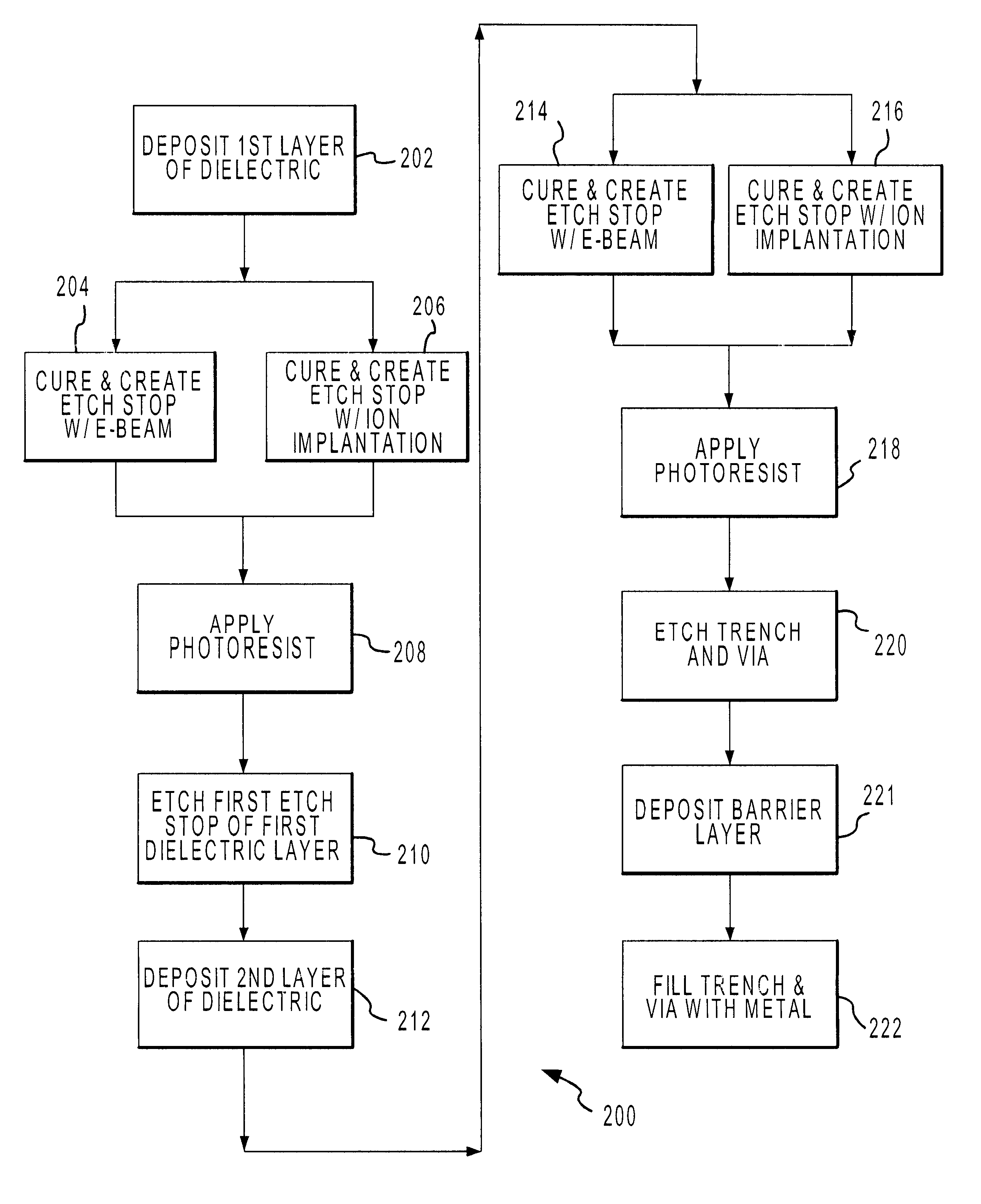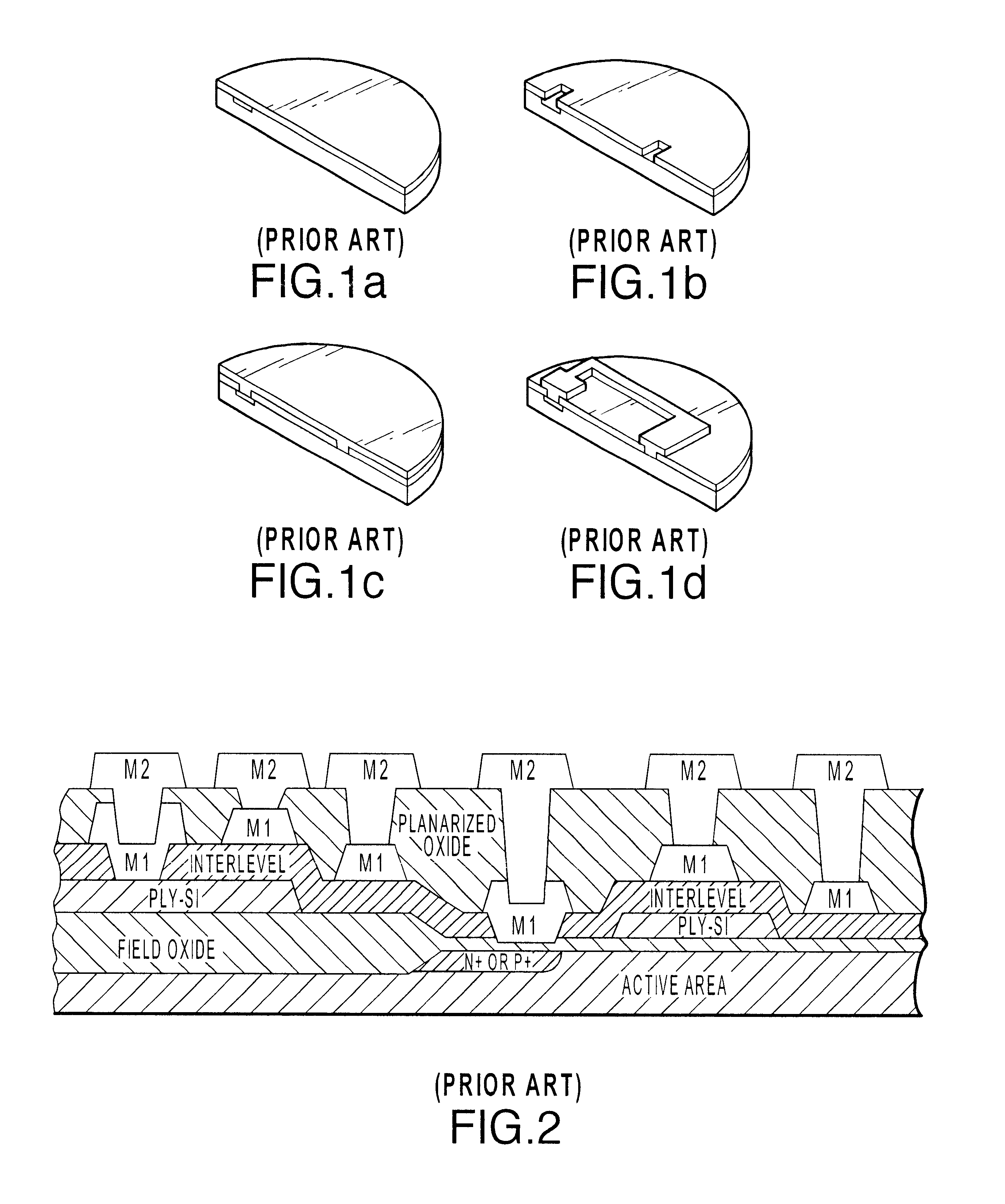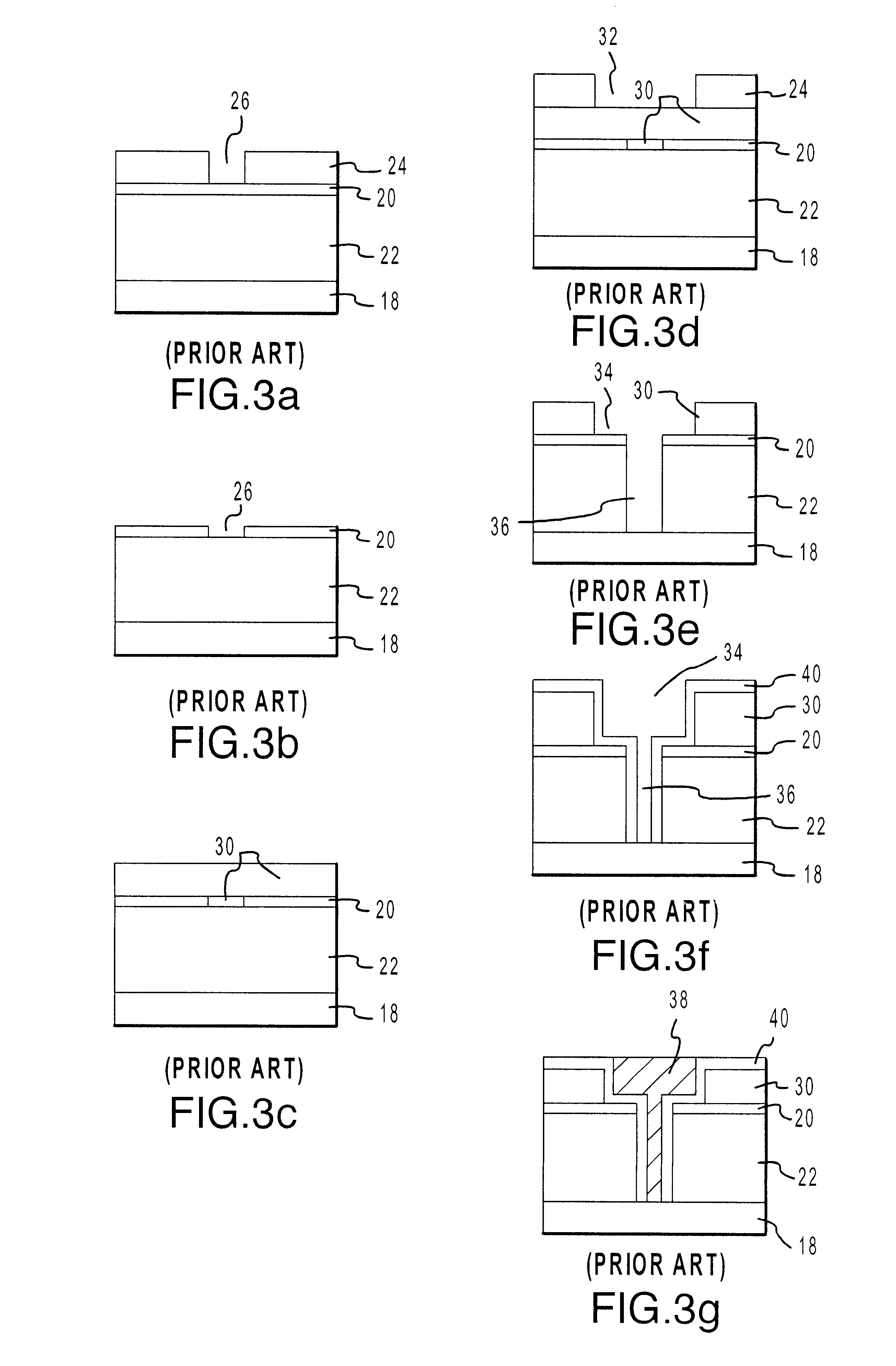Method for dual damascene process using electron beam and ion implantation cure methods for low dielectric constant materials
a dielectric constant, electron beam technology, applied in the direction of basic electric elements, electrical equipment, semiconductor devices, etc., can solve the problems of reduced surface wiring space, reduced yield, and high cost of multi-level metal systems
- Summary
- Abstract
- Description
- Claims
- Application Information
AI Technical Summary
Problems solved by technology
Method used
Image
Examples
Embodiment Construction
As the semiconductor industry moves to smaller and smaller integrated circuit features, the aspect ratio of the interconnects connecting these features increases and it becomes more and more difficult to obtain good etching and good gap fill results. Accordingly, metal etch and dielectric gap fill are seen as the industry's greatest challenges in moving to smaller dimensions. Damascene processing eliminates both of these conventional steps used in processing interconnects and, as a result, the industry has moved toward improving damascene processing techniques.
The steps involved in an exemplary prior art dual damascene metallization process are shown in FIGS. 3a-3f. The process typically begins with a silicon wafer substrate that is covered with an insulator layer. The insulator is typically a dielectric, and preferably a material having a low dielectric constant. Masking then takes place to create patterns for the via and trench, and an etch stop layer such as a thin silicon nitrid...
PUM
 Login to View More
Login to View More Abstract
Description
Claims
Application Information
 Login to View More
Login to View More - R&D
- Intellectual Property
- Life Sciences
- Materials
- Tech Scout
- Unparalleled Data Quality
- Higher Quality Content
- 60% Fewer Hallucinations
Browse by: Latest US Patents, China's latest patents, Technical Efficacy Thesaurus, Application Domain, Technology Topic, Popular Technical Reports.
© 2025 PatSnap. All rights reserved.Legal|Privacy policy|Modern Slavery Act Transparency Statement|Sitemap|About US| Contact US: help@patsnap.com



